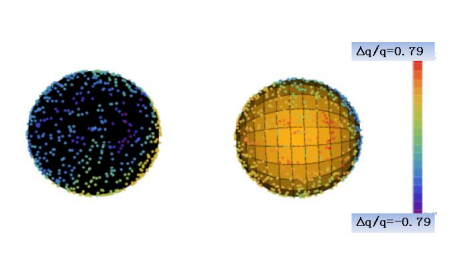More Evidence for a Preferred Direction in Spacetime
The evidence is growing that some parts of the Universe are more special than others.
One of the cornerstones of modern astrophysics is the cosmological principle. This is the idea that observers on Earth have no privileged view of the Universe and that the laws of physics must be the same everywhere.
Many observations back up this idea. For example, the Universe looks more or less the same in every direction, having the same distribution of galaxies everywhere we look.
In recent years, however, some cosmologists have begun to suspect that the principle may be wrong. They point to evidence from the study of Type 1 supernovas, which appear to be accelerating away from us, indicating the Universe is not just expanding but accelerating away from us. The curious thing is that this acceleration is not uniform in all directions. Instead, the universe seems to be expanding faster in some directions than others.
This story is only available to subscribers.
Don’t settle for half the story.
Get paywall-free access to technology news for the here and now.
Subscribe now
Already a subscriber?
Sign in
You’ve read all your free stories.
MIT Technology Review provides an
intelligent and independent filter for the
flood of information about technology.
Subscribe now
Already a subscriber?
Sign in
But how good is this evidence? Is it possible that the preferred direction is a statistical mirage that will disappear with the right kind of data analysis.
Rong-Gen Cai and Zhong-Liang Tuo at the Key Laboratory of Frontiers in Theoretical Physics at the Chinese Academy of Sciences in Beijing have re-examined the data from 557 supernovas throughout the Universe and recrunched the numbers.
Today, they confirm that the preferred axis is real. According to their calculations, the direction of greatest acceleration is in the constellation of Vulpecula in the Northern hemisphere. That’s consistent with other analyses and also with other evidence such as other data showing a preferred axis in the cosmic microwave background.
That will force cosmologists to an uncomfortable conclusion: the cosmological principle must be wrong.
But it also raises exciting questions: why does the Universe have a preferred axis and how do should we account for it in our models of the cosmos?
Answers below!
Ref: arxiv.org/abs/1109.0941: Direction Dependence Of The Acceleration In Type Ia Supernovae
